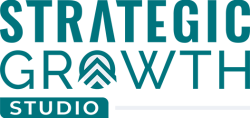Most business plans sound good on paper but fall apart under lender scrutiny. Here’s what banks and SBA underwriters actually want to see—and how to make your plan lender-ready.
Why Writing for Lenders Is Different
Many business owners write their plans for themselves or investors. But lenders aren’t buying into your vision—they’re lending against risk. Your business plan for funding needs to answer two questions above all:
- Can this business generate enough cash to repay the loan?
- Can the owner be trusted to manage that cash responsibly?
If your plan doesn’t speak directly to those points, approval is unlikely.
Section-by-Section: What Lenders Look For
Executive Summary
Skip the fluff. Clearly state:
- What your business does
- How much you’re asking for
- What the funds will be used for
- Your current revenue and key metrics
Company Overview
- Business structure (LLC, S-Corp, etc.)
- Owner experience and qualifications
- Legal and licensing status
- Milestones to date
Market Opportunity
Include real data: TAM/SAM/SOM, industry trends, and target customer profiles.
Avoid “everyone is our customer” language. Lenders want to see that you understand who you serve and how you’ll reach them.
Products & Services
Be specific about:
- Your core offerings
- Revenue model
- Competitive advantage (price, brand, innovation)
Marketing & Sales Plan
This is often vague in funding plans. Lenders want:
- A clear strategy to acquire and retain customers
- Estimated customer acquisition cost (CAC)
- Sales goals tied to projections
Operations Plan
Detail:
- Staffing plan and wage structure
- Key vendors and systems
- Location, leases, equipment
Financial Projections
Non-negotiable. Include:
- 3-year income statement
- Cash flow forecast (monthly for year 1)
- Assumptions and justification
- Loan repayment schedule
Most plans fail here. Be realistic. Overly optimistic projections raise red flags.
Use of Funds
Break down exactly how the loan will be spent. For SBA and traditional bank loans, this is required. Examples:
- Buildout and equipment: $145,000
- Working capital: $55,000
- Marketing: $30,000
Lender Red Flags to Avoid
- Fluffy or buzzword-heavy writing
- Generic templates with no customization
- No backup for revenue assumptions
- Ignoring debt service or repayment terms
- Failing to tie growth to capacity (staff, systems)
Make It Easy to Say Yes
Here’s what builds lender confidence:
- A well-organized, professional document
- Detailed financials that match the story
- Clear logic behind growth plans
- A founder who understands risk and return
If you can explain how your business will repay the loan—and back it up with numbers—you’re ahead of 80% of applicants.
Final Thought: Write Like You’re Under Review
Lenders don’t fund ideas. They fund execution. A business plan for funding needs to reflect more than ambition—it needs to show control, competence, and a path to repayment.
Want to increase your odds of getting funded? Build a business plan designed for lenders, not just for yourself.




